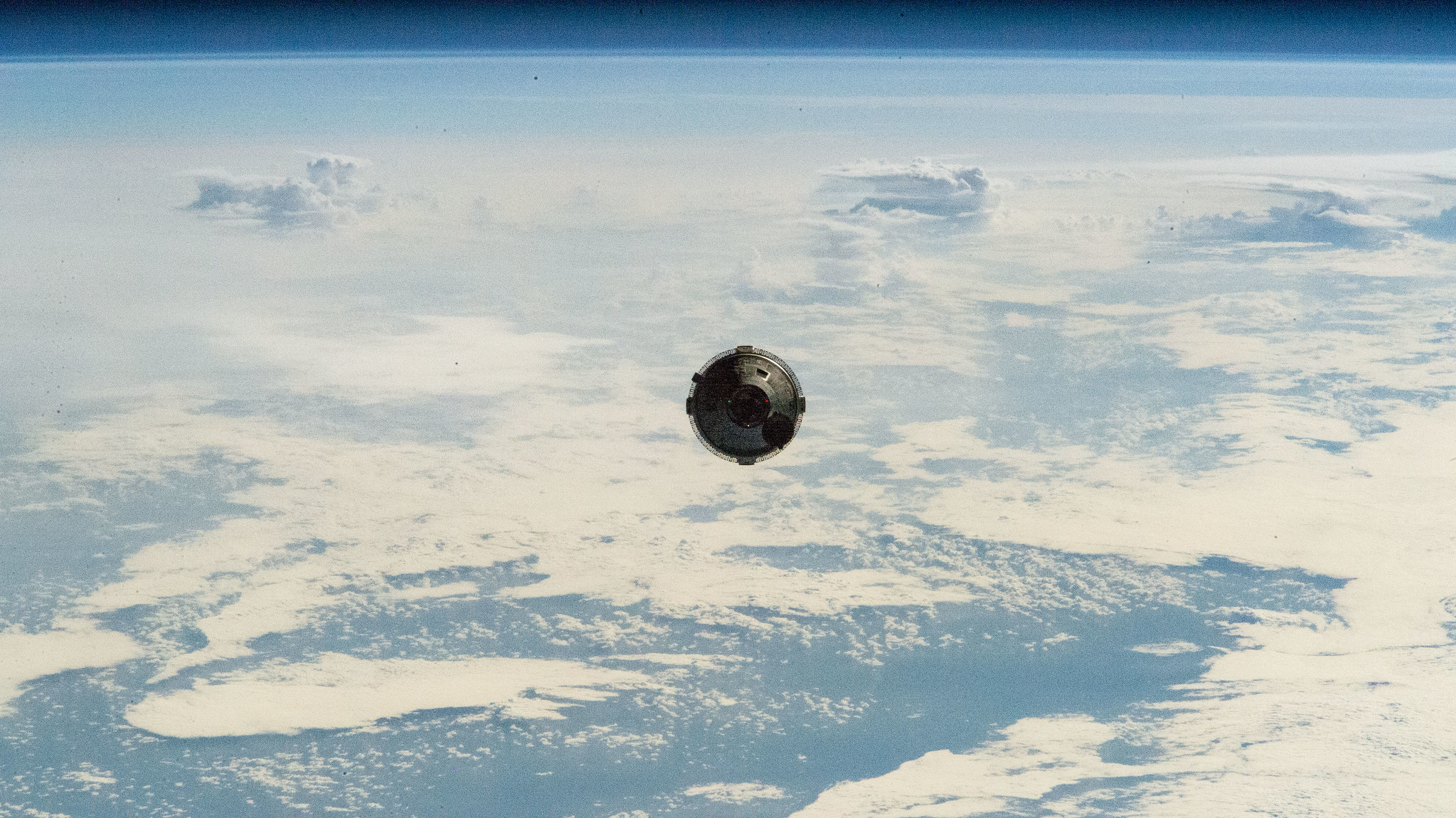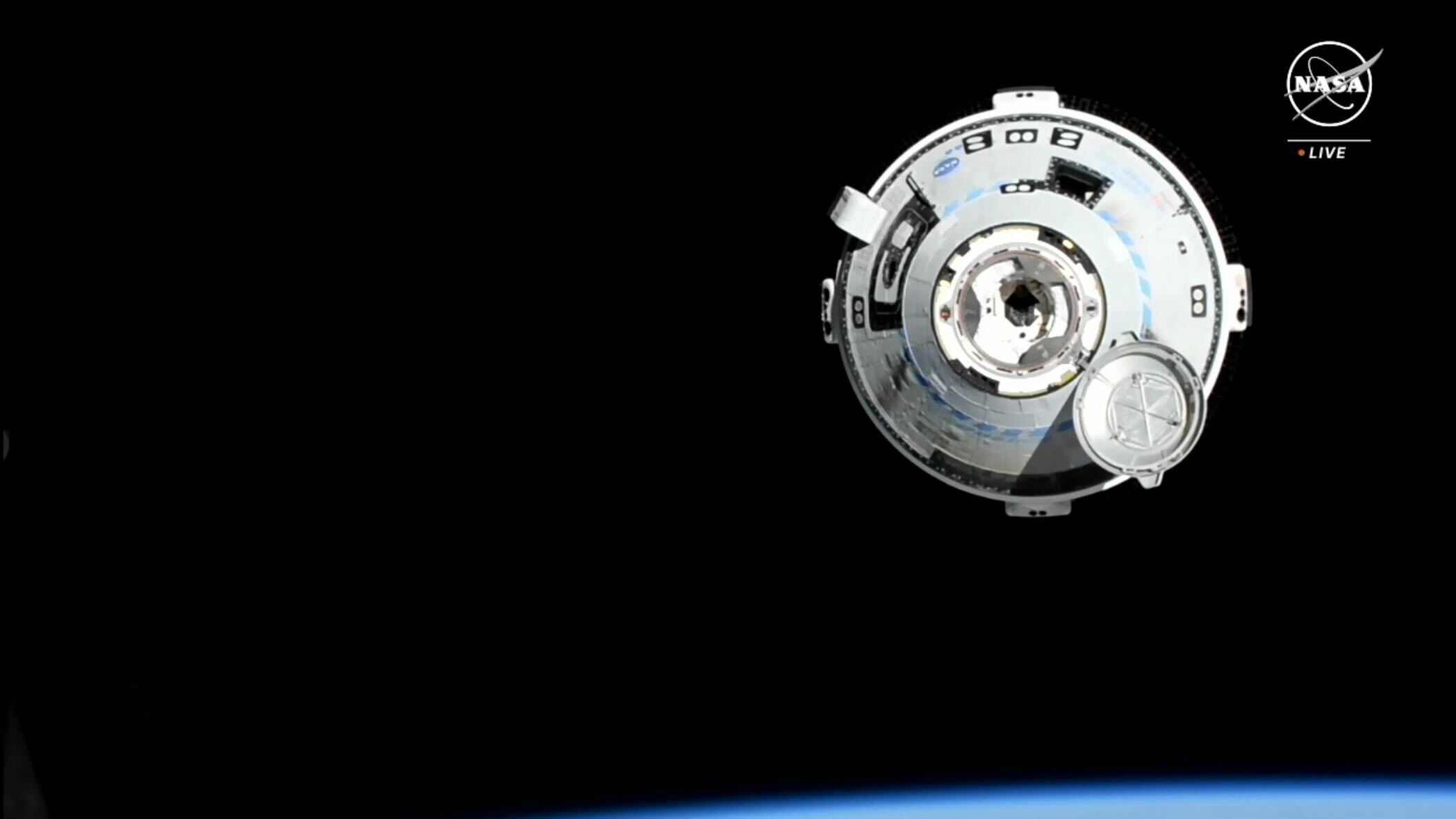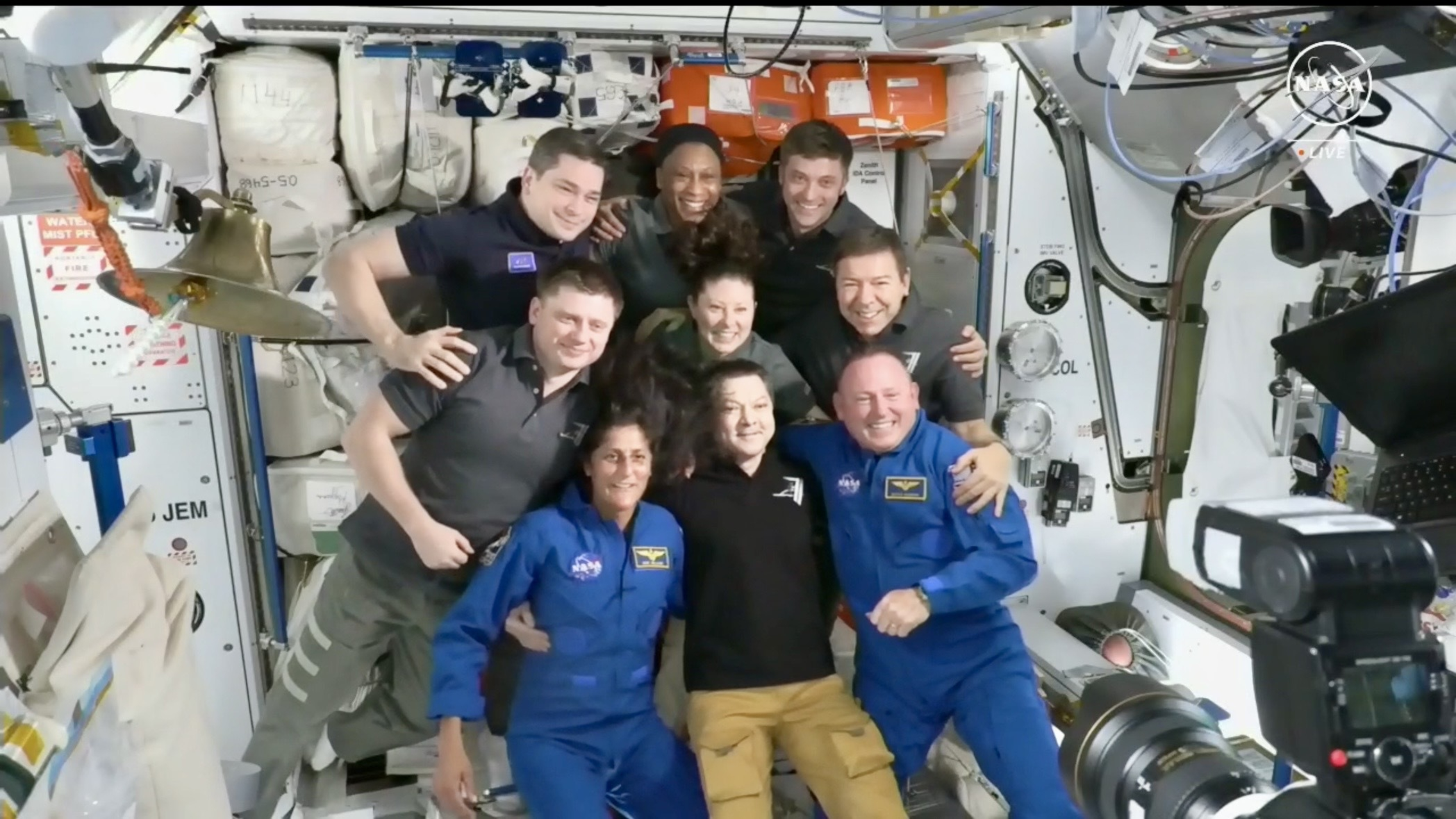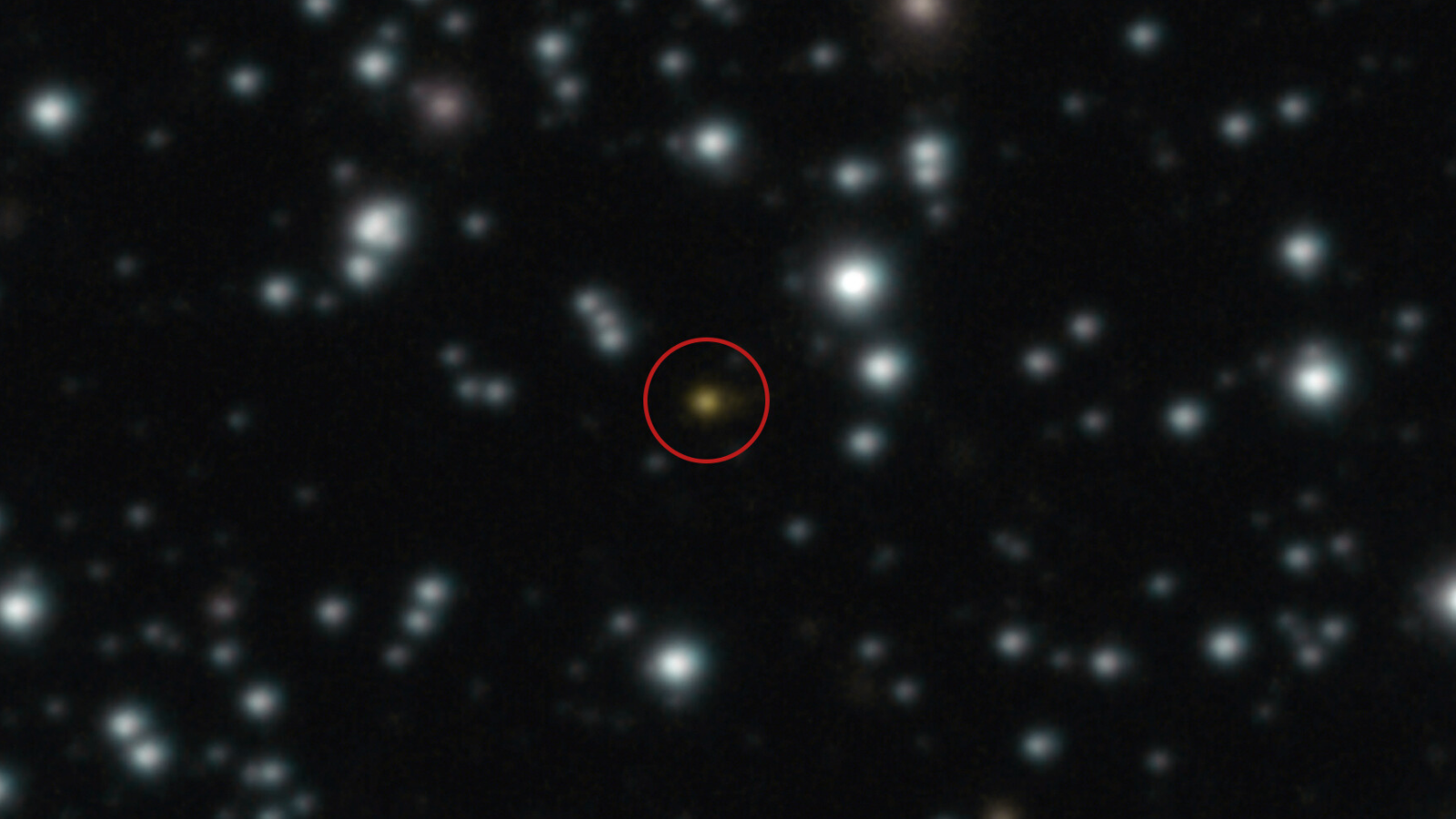Thruster glitches and helium leaks can't stop Boeing's Starliner astronaut test flight — but why are they happening?
The glitches delayed Starliner's docking at the ISS, but so far nothing insurmountable has arisen, officials say.

When NASA astronauts tried to dock Boeing's first crewed Starliner spacecraft at the International Space Station Thursday (June 6), they had to wait.
Five aft thrusters on the Starliner service module were out. And that was after flight controllers found workarounds for two new helium leaks on the spacecraft on top of one it already had. Also, its cooling system was using more water than expected, and another helium leak would be detected later after Starliner docked with the space station.
So what gives? Why all the glitches?
NASA and Boeing, for their part, aren't worried. After all, Starliner's mission to the ISS, Boeing's Crew Flight Test, is — both in name and nature — a test flight. The mission is only the sixth in history in which NASA astronauts have flown on a brand-new spacecraft for the first time. For Boeing, finally reaching the ISS with astronauts after its first uncrewed test flight failed to do so in 2019 only to have more issues delay this crewed flight marked a giant leap forward.
And those glitches? So far, NASA and Boeing have surpassed them.
Starliner docked at the ISS just over an hour later than planned after some manual flying by NASA astronauts Butch Wilmore (the mission's commander) and Sunita Williams (its pilot) helped Boeing engineers recover four of the five down thrusters. The fifth will stay deactivated for the rest of the mission, but the glitch — which may actually be in Starliner's software and not the thrusters themselves — won't pose a risk for the return to Earth.
Related: Boeing Starliner 1st astronaut flight: Live updates
Breaking space news, the latest updates on rocket launches, skywatching events and more!

The astronauts also refilled the water tank in their cooling system from an onboard supply and future vehicles will carry a bigger tank from the start, Boeing said. As for those helium leaks, Starliner has an ample supply of the gas for the rest of the mission, but Boeing engineers still want to understand why they keep popping up.
"We have two problems on this vehicle right now, the helium leak and figuring out how to fine-tune these thrusters so they're not selected off," Boeing Starliner program manager Mark Nappi told reporters in a press conference Thursday evening. "Those are pretty small, really, issues to deal with and we'll figure them out before the next mission."
NASA's Steve Stich, who oversees the agency's Commercial Crew Program, compared Boeing's Starliner flight with the agency's own first space shuttle mission, STS-1, which launched astronauts John Young and Bob Crippen into orbit in 1981.
"I would say some of the challenges we are facing are very similar to the space shuttle," Stich said. The water cooling system glitch, for one, is strikingly similar to one NASA faced on shuttle flights throughout that 30-year program, he added.
Meanwhile, Wilmore and Williams have a packed week or more while at the space station, where they will test everything from how comfortable Starliner is to sleep and how well it can accommodate crews of four astronauts (its nominal complement) to how the capsule serves as a safe haven in case of a station emergency.
"Because they're only scheduled to be there for a relatively short time, we work them a lot harder than we work our ISS crews," NASA's Emily Nelson, chief flight director for Starliner's Crew Flight Test, told reporters. "There's a lot of checkouts."
Many of those tests are aimed at preparing the station and the Starliner program for Starliner 1, the first of at least six astronaut taxi flights for NASA by Boeing under its $4.2 billion Commercial Crew Program contract. That mission is expected to launch in early 2025. Boeing is one of two companies with multi-billion-dollar contracts to fly NASA astronauts to and from the ISS. The other, SpaceX, has already flown eight missions for NASA on its Crew Dragon spacecraft.

Nelson said ISS flight controllers can use the station's robotic arm cameras to inspect the affected thrusters on Starliner in case any issues can be detected that way. Since the thrusters are on Starliner's service module, which is jettisoned ahead of reentry, Boeing won't get it back to study on Earth.
Still, NASA and Boeing are confident the thruster glitch seen during docking won't pose a major threat. During Boeing's second uncrewed flight test, which actually did reach the space station in 2022, several thrusters also went offline in much the same way, Stich said.
"I think we're not necessarily worried about all the thrusters," Stich said, adding that the ones affected in the 2022 flight performed fine after being recovered. "Those thrusters did well after we brought them back."
For their part, Wilmore and Williams are eager to get to work putting Starliner through its paces.
The astronauts received a warm welcome as they floated into the ISS from Starliner, complete with the ringing of a ship's bell, some weightless dancing and hugs all around from the station's seven-person Expedition 71 crew representing the United States and Russia. They have until at least June 14, if not a bit longer, to complete their work, and only have one day off during that time, NASA has said.
"We're ready to go to work for the international partners here," Wilmore said. "Whatever it is you got us to do. We're ready."
Join our Space Forums to keep talking space on the latest missions, night sky and more! And if you have a news tip, correction or comment, let us know at: community@space.com.

Tariq is the award-winning Editor-in-Chief of Space.com and joined the team in 2001. He covers human spaceflight, as well as skywatching and entertainment. He became Space.com's Editor-in-Chief in 2019. Before joining Space.com, Tariq was a staff reporter for The Los Angeles Times covering education and city beats in La Habra, Fullerton and Huntington Beach. He's a recipient of the 2022 Harry Kolcum Award for excellence in space reporting and the 2025 Space Pioneer Award from the National Space Society. He is an Eagle Scout and Space Camp alum with journalism degrees from the USC and NYU. You can find Tariq at Space.com and as the co-host to the This Week In Space podcast on the TWiT network. To see his latest project, you can follow Tariq on Twitter @tariqjmalik.
